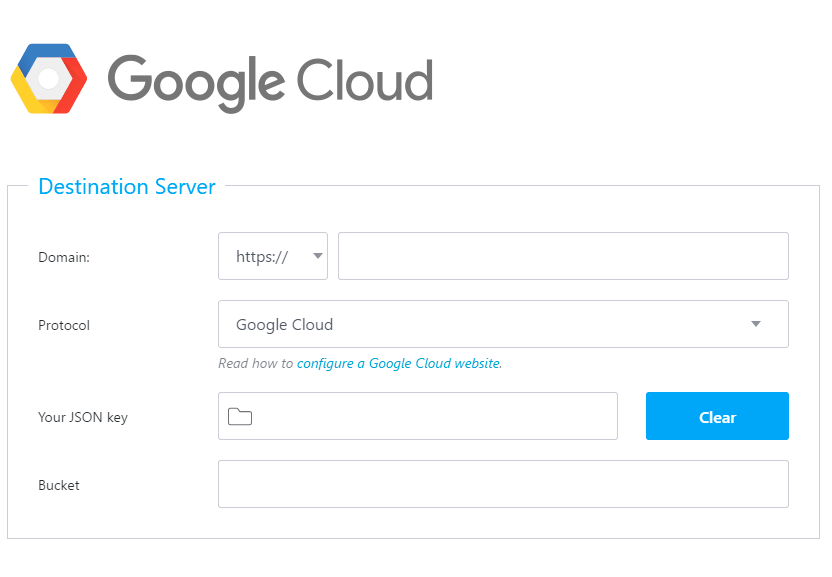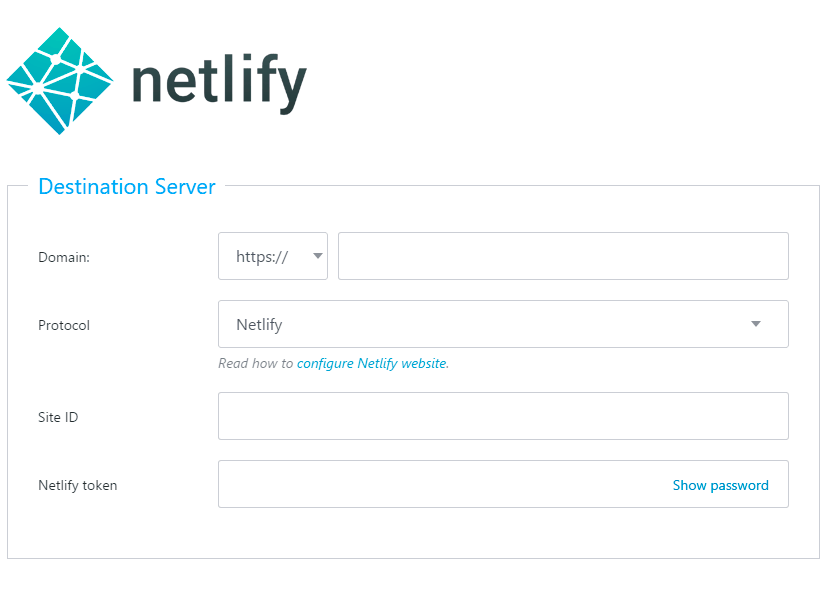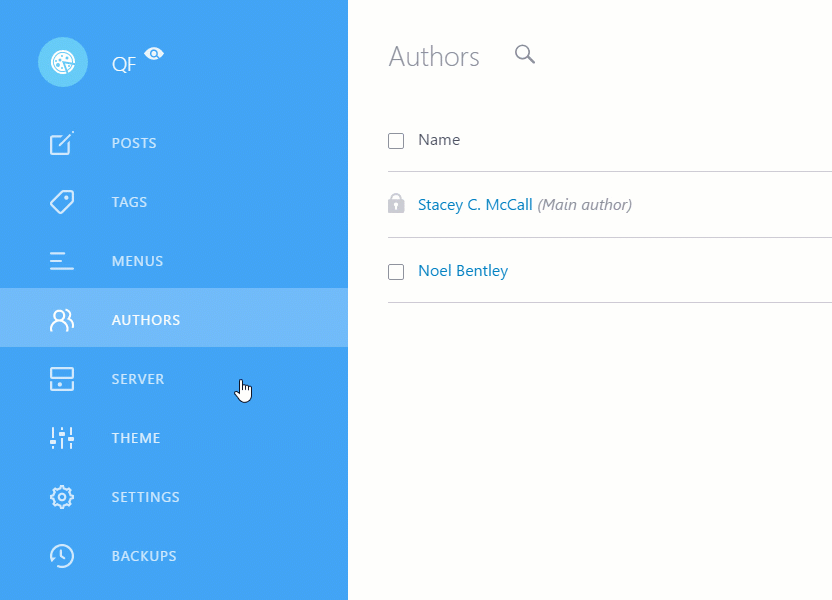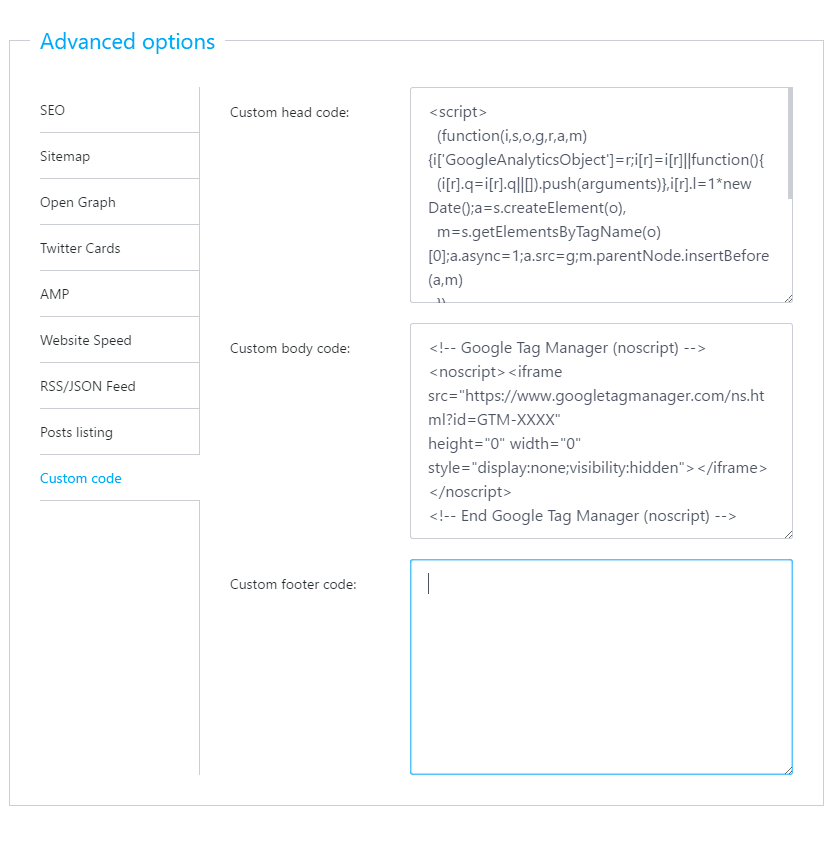Get Google Cloud and Netlify support plus a brand-new theme in the latest Publii beta release
Publii The new beta release of Publii is here, and as always there's a ton of new features and fixes to get excited about, including support being added for even more popular deployment platforms, a bright, engaging new theme to further diversify your site styling, and expanded author functionality.
With that out of the way, let's get on with the features!
A new beta naming convention
You may have noticed that we haven't referred to this version of Publii as Beta 5, despite it being the fifth beta. This is because the existing naming convention was too restrictive; Publii is constantly being updated and new bleeding-edge builds are released regularly, so we needed something that allows us to track changes, additions and general growth more consistently.
From now on, each Publii release will consist of both a version number and a build number starting with this release, which is Beta v.0.15.5 build 7795, which gives us a more nuanced way of tracking Publii's current status, though admittedly it doesn't roll quite as well off the tongue! We're also aiming to release new versions of Publii a little bit more regularly in future; every 2-3 weeks depending on the scale of the features being added with each iteration, so you should be seeing more features, more regularly.
A stylish new fashion blog theme
First out on the catwalk is a brand-new theme to choose for your site, called QF. Rather than following the traditional blog layout, QF instead uses some pretty unique styling to make it stand out, with a header that combines a hero image, text box and smaller article previews for a slightly off-kilter frontpage that catches the eye of new readers.

Scrolling down the page gives you more previews, each contained in its own section to really put the focus on the images, with an overlaid text box and a nice bit of Featured flair for your more important posts. You'll find the QF theme in the Site Settings section of Publii; click on the Settings option in the menu, then in the Theme option select the theme in the Install and use list to activate it.
Google Cloud support
There's no doubt that Publii is a great tool for coders looking to build a static site to promote their projects, so we've been doing our best to further expand the number of supported platforms. We've already added support for GitHub Pages and Amazon S3, but in this beta release we've added one of the bigger players to Publii; Google Cloud.

Google Cloud's functionality is a little tough to unlock if you don't know what you're doing, but for those with the necessary knowledge it is one of the more robust storage platforms on the market. Getting started can be a challenge if you've never done it before, but if you need help setting up you can follow our step-by-step guide in the Publii documentation.
Netlify support too!
We could've stopped at Google Cloud support, but we want to ensure that our users have the full range of options available when choosing where to host their code and related site. For that reason we've added support for Netlify.

Much like GitHub Pages, Netlify is focused mainly on web projects, with specific functionalities designed to make it easy to create and deploy your code or host your static site. It's remarkably easy to set up, and has one of the more coherent pricing models for those of us not deep in the world of web development! Getting Netlify working with Publii does take a few more steps than FTP, but using our in-depth guide you'll be up and running in no time.
Create Multiple Authors
Since Publii's inception it has only been possible to attribute your posts to a single author, with a single bio and a single author page. For many users this is enough, since Publii is often used for small web projects such as blogs or portfolios. However, even the smallest blog has the potential to grow in popularity, so one of our goals has always been to expand the available author options.

This beta release includes one small step along this road, as it includes the ability to create multiple author pages and bios, allowing you to credit each post to a different person. Just to clarify; this feature adds only the ability to create multiple authors for the purpose of attribution; to actually write the articles you'll still need access to the relevant Publii installation.
Insert code into theme body
Something for the tinkerers among you; Publii themes already include the ability to add code to the head section of the theme, which many tools utilize. But more advanced users, naturally, want to have even more control when inserting their own code. In this beta the option to insert your own code into the body tag has been added to the theme options.

To take advantage of this feature you will need to update your theme to the latest version. This can be done within the Site settings; click on the Settings option in the left menu, then in the Theme option reselect your current theme in the Install and use section; this will download and install the updated version of the theme with this new feature.
Developer note: Breaking API change
If you're a developer working with Publii, you should be aware that the following breaking API changes have been made:
- The ''constants'' option in the theme JSON were moved to the ''renderer'' section.
For all other users; carry on, there's nothing to worry about here!
A slew of improvements to make the Publii experience better
Like you'd expect from a beta update, there's quite a few little changes that help make using Publii easier than before. Feast your eyes on these updates:
- Added support for new custom post field types - Oft-requested, and now here! New types include input and textarea.
- Added support for Google Analytics in the AMP version of the Publii site - get detailed analytics even on your mobile pages.
- Added option for creating a custom footer in the AMP version - Put your own text in the footer of your mobile-friendly site.
- Improved stability of file upload to GitHub Pages - this should fix issues encountered on fluctuating internet connections.
- Reorganized notes in server settings.
- Improved sync button messages when no server has been configured.
- Changed the UI for removing a featured image.
- Remove the user selection on some UI elements to improve the user experience.
- Improved the CSS minification process.
- Small UI adjustments.
- All themes got tons of improvements: jQuery updated to 3.2.1 slim version, added WYSIWYG editor for copyright field, lazy load CSS classes are now loaded only when the option is enabled, constans option changed to renderer.
Bugfixes
Sometimes it's not about improving something, it's about fixing what went wrong. That's what bugfixes are for; here you'll find details of reported bugs that have been fixed in this beta release.
- Fixed issue with SFTP with key protocol when it requests a password (validation error).
- Fixed rendering error when featured image does not exist.
- Fixed JSON syntax error in the Mercury theme.
- Fixed issue with removing SVG code in the post editor.
- Fixed issue with uppercase ''.JPG'' extensions.
- Fixed issue with uploading to GitHub Pages from Windows machines due to wrong filenames.
- Fixed crash caused when the backup location field was left empty.
- Fixed issue with memory leaks due to unregistered event listeners in app.
- Fixed issue with rendering related posts in few cases.
In Summary
And that just about covers everything! Please do take the time to play around with this release and see what you think; we're immensely grateful for any feedback that we receive, so if you encounter any bugs or have features that you think would be a good addition to Publii then feel free to drop in on our Publii Community and tell us all about it. We're still building and improving Publii regularly, so you're opinion is important if we're to make Publii the best it can be!
Note: Before installing a new version of Publii, we recommend that you backup all your websites using the back up option.
 Bob Mitro
Bob Mitro